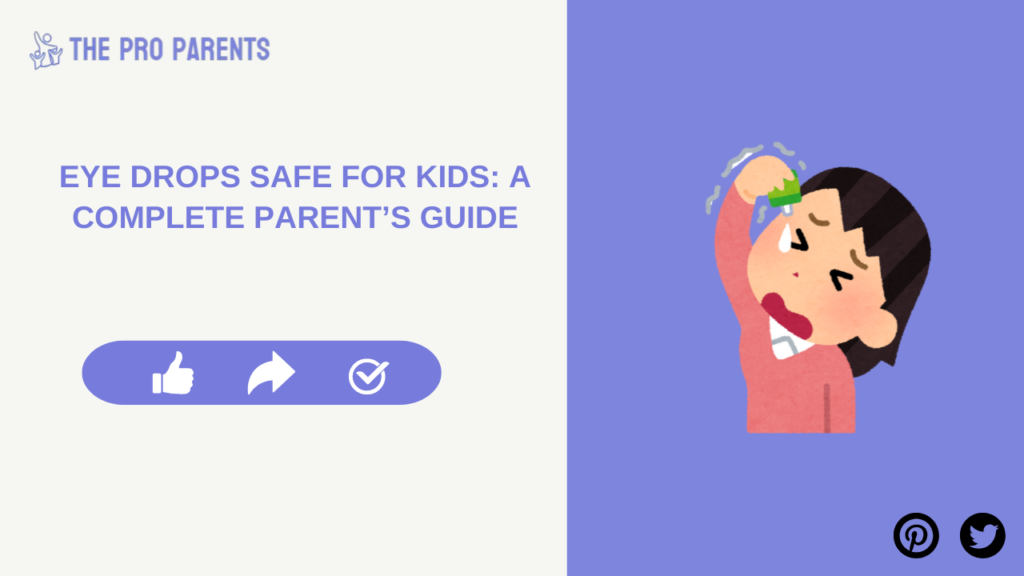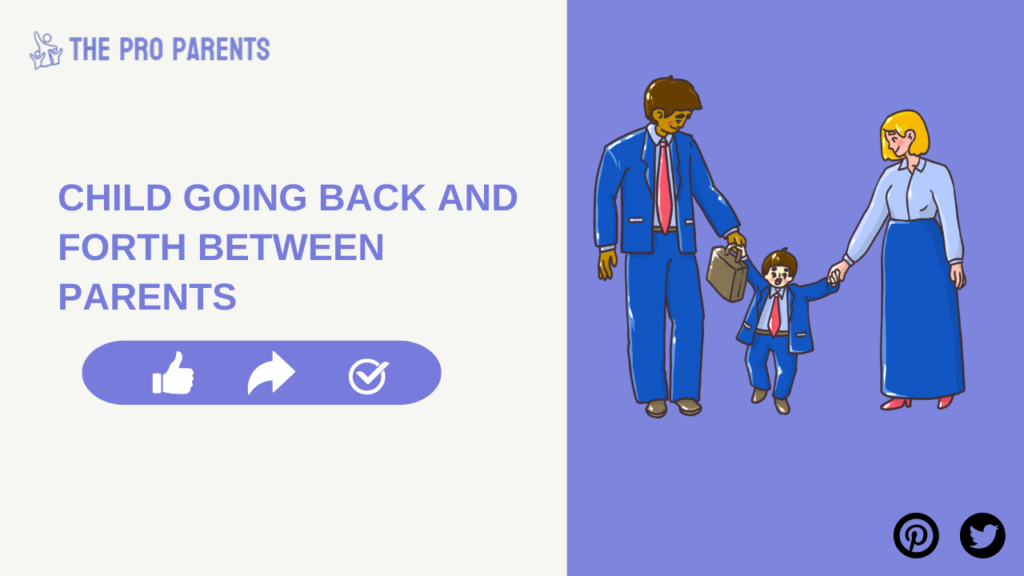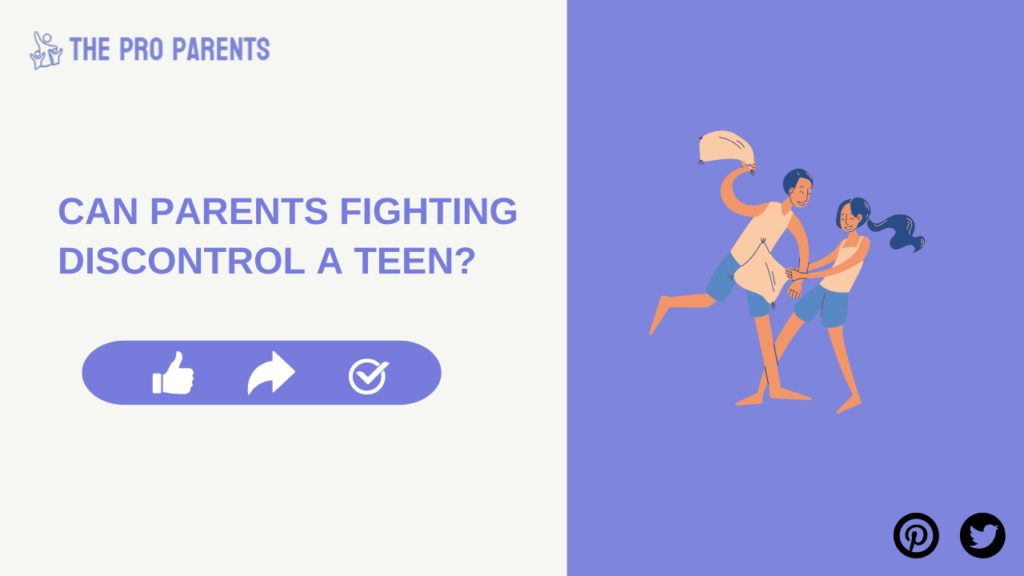Children often face eye problems due to their active lifestyles and exposure to various irritants. Whether it’s allergies, dryness, or redness, eye care is essential for maintaining your child’s health. This guide will answer the critical question: Are eye drops safe for kids? We’ll explore the best options, natural remedies, and expert advice for keeping your child’s vision clear and healthy.
Table of Contents
Why is Eye Care Vital for Kids?
Children’s eyes are still developing, making them more vulnerable to environmental factors and infections. Early attention to their eye health can prevent complications such as vision problems, irritation, or even permanent damage.
Factors like excessive screen time, exposure to allergens, and outdoor activities increase the risk of eye issues. While eye drops can be a solution, it’s important to choose the right type.
Pro Tip: Pair eye drops with regular check-ups and proper hygiene to ensure your child’s eyes remain in top condition.
Common Eye Problems in Children
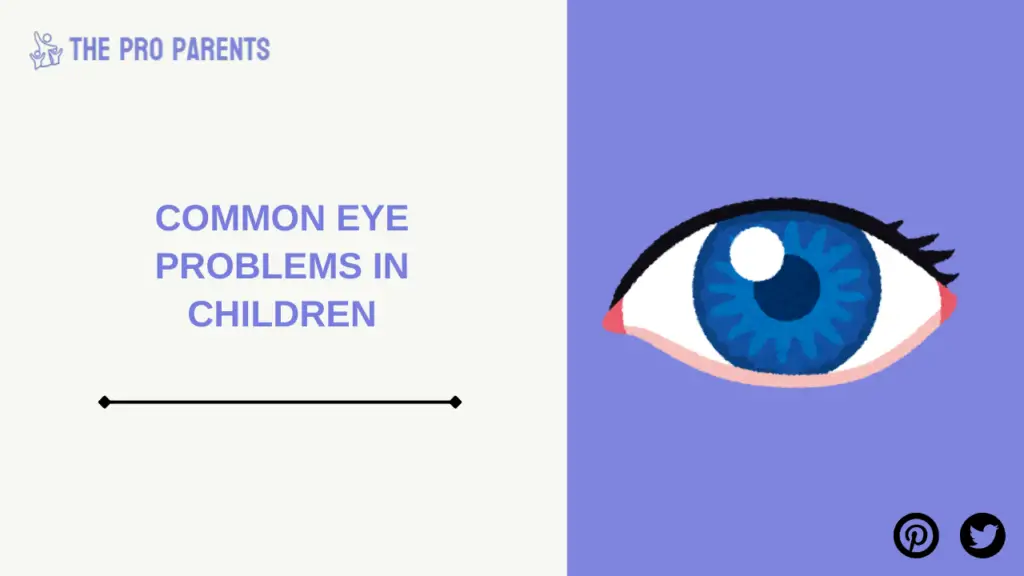
1. Red, Itchy, or Irritated Eyes
Redness is often caused by exposure to chlorine in swimming pools, dust, or prolonged screen use. It may also result from rubbing the eyes with dirty hands.
2. Allergies and Dryness
Children can develop allergies to pollen, dust mites, or pet dander. These allergens can cause dryness and itchiness, particularly during seasonal changes.
3. Conjunctivitis (Pink Eye)
This highly contagious condition causes redness, swelling, and discharge. Pink eye may be viral or bacterial, requiring different treatments, including prescription drops in severe cases.
4. Eye Strain from Screens
With the increasing use of digital devices, children are prone to digital eye strain, leading to dryness, fatigue, and blurred vision.
Are Eye Drops Safe for Kids?

Not all eye drops are safe for children. Always consult a pediatrician or eye specialist before using any product. Look for eye drops with:
- FDA Approval: Products tested for pediatric use.
- Age-Specific Formulas: Designed for children’s delicate eyes.
- Preservative-Free Options: These reduce the risk of irritation.
Avoid over-the-counter (OTC) eye drops with harsh chemicals unless specifically recommended by a doctor.
Types of Eye Drops for Kids
1. Artificial Tears
These are non-medicated and help with dryness caused by screen use or air conditioning. Artificial tears are safe and widely available.
2. Antihistamine Drops
Designed for allergy relief, these eye drops reduce itchiness, redness, and swelling caused by seasonal allergens. Look for child-safe options like Zaditor.
3. Antibiotic Drops
Prescribed for bacterial infections such as pink eye, these drops should only be used under medical supervision.
4. Saline Solutions
Perfect for cleaning the eyes, saline solutions help remove dirt, allergens, or debris. These are safe for infants and toddlers.
Related Insight: If you’re concerned about your child’s oral health in addition to their overall well-being, you may also find our article on why kids have silver teeth helpful.
How to Choose the Best Eye Drops for Your Child

- Consult a Specialist: Never self-diagnose.
- Check Ingredients: Avoid products with preservatives or chemicals that may irritate sensitive eyes.
- Match the Symptoms: Use specific eye drops for issues like allergies, dryness, or redness.
- Consider Age: Ensure the product is age-appropriate.
How to Use Eye Drops on Children Safely
Administering eye drops can be challenging, especially with younger kids. Here’s how to make it easier:
- Explain the Process: Calmly tell your child what to expect to reduce anxiety.
- Practice Good Hygiene: Wash your hands and clean the dropper tip before use.
- Position Properly: Have your child lie down and tilt their head back.
- Use Distraction: Play soothing music or let them hold a toy.
Pro Tip: Aim for the inner corner of the eye and let the drops flow naturally.
Natural Alternatives to Eye Drops
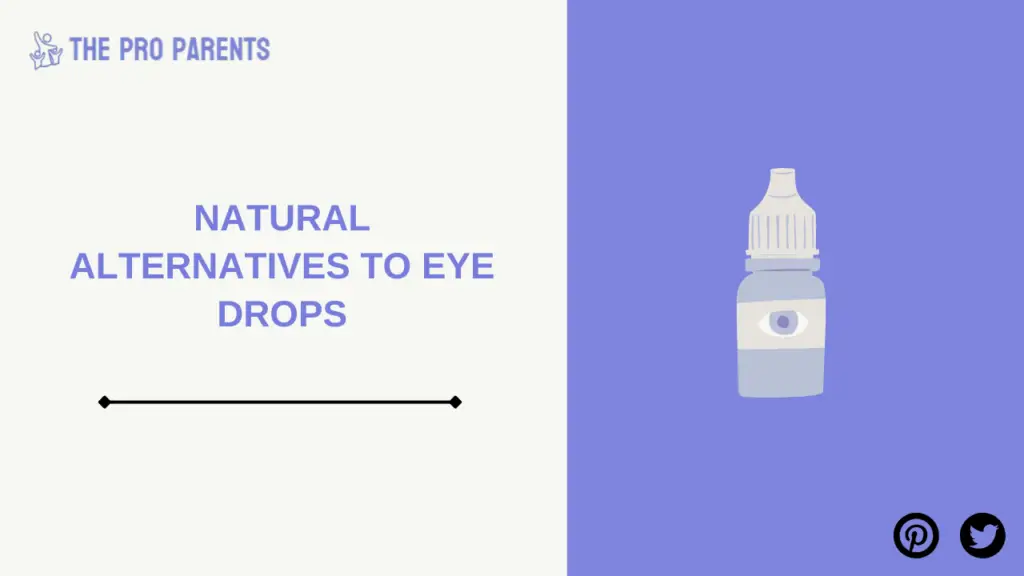
If you’re looking for non-medicated options to support your child’s eye health, natural remedies can be highly effective. These approaches not only soothe the eyes but also promote overall well-being.
1. Warm Compresses
Applying a soft, warm cloth to your child’s closed eyes can reduce irritation, redness, and swelling. Warm compresses help improve blood circulation around the eyes, offering quick relief from discomfort. They are especially useful for conditions like mild eye strain or dryness caused by screen time.
How to Use:
- Soak a clean cloth in warm (not hot) water.
- Wring it out and place it gently over the eyes for 5-10 minutes.
- Repeat 2-3 times a day if necessary.
2. Hydration
Proper hydration is essential for maintaining the natural moisture balance in the eyes. Dehydration can exacerbate dryness and irritation, especially in children. Encourage your child to drink water regularly, aiming for at least 6-8 cups daily, depending on age and activity levels.
Pro Tip: Pair hydration with a humidifier in your child’s room, especially during dry or air-conditioned seasons, to add moisture to the air.
3. Balanced Diet
Nutrition plays a crucial role in eye health. Foods rich in Vitamin A, Omega-3 fatty acids, and lutein strengthen vision and help prevent dryness.
Recommended Foods:
- Carrots and Sweet Potatoes: High in Vitamin A, which supports healthy vision.
- Fish (like salmon): Packed with Omega-3s, great for reducing eye inflammation.
- Spinach and Kale: Loaded with lutein and zeaxanthin, known to protect against eye damage.
- Eggs: Contain a combination of essential nutrients for eye health, including lutein and Vitamin E.
4. Proper Rest and Screen Time Management
In today’s digital world, kids often spend hours in front of screens, leading to digital eye strain. Limiting screen time and ensuring your child gets adequate rest is vital for maintaining eye health.
Tips for Reducing Screen Strain:
- Follow the 20-20-20 Rule: Encourage your child to look at something 20 feet away for 20 seconds every 20 minutes of screen time.
- Set up a screen-free hour before bedtime to promote better sleep.
5. Eye Exercises
Simple eye exercises can alleviate strain and improve focus. These exercises are fun and easy for children to follow.
- Blinking Exercise: Encourage your child to blink consciously every few seconds while using screens.
- Focus Shifting: Ask them to shift their focus between a nearby object and something far away.
6. Outdoor Play
Regular outdoor play helps improve overall eye health by exposing children to natural light. Studies suggest that spending time outside reduces the risk of myopia (nearsightedness) in children.
7. Clean and Hygienic Habits
Teaching your child proper hygiene practices can prevent common eye issues like infections or irritation.
- Encourage frequent handwashing.
- Remind them not to rub their eyes with unclean hands.
- Replace pillowcases regularly to avoid bacterial buildup.
Parenting Tip: Learn how balanced nutrition and proper care can also prevent dental issues in kids. Read our article: Is it my fault my kid has cavities?.
When to See a Doctor
While most eye problems can be treated at home, consult a doctor if:
- Symptoms persist after 3 days of using eye drops.
- Your child experiences severe pain or swelling.
- There’s discharge, crusting, or difficulty opening the eyes.
Prompt medical attention can prevent complications and ensure your child’s vision is protected.
Best Practices for Eye Care in Children
- Teach Hygiene: Encourage children to avoid rubbing their eyes with dirty hands.
- Protect from UV Rays: Use sunglasses when outdoors.
- Reduce Screen Time: Follow the 20-20-20 rule (look away from screens every 20 minutes).
- Regular Eye Exams: Schedule check-ups to catch any issues early.
Recommended Kid-Safe Eye Drops
Here’s a list of trusted products for children (always consult your doctor first):
- Artificial Tears: Refresh Tears, Systane Ultra (Preservative-Free)
- Antihistamines: Zaditor, Pataday (Child-Safe Formulas)
- Saline Solutions: Little Remedies Saline Drops
- Antibiotics: Prescribed as needed
The Link Between Screen Time and Eye Health
Excessive screen time is a major cause of eye strain and dryness in children. Limiting screen exposure can prevent these issues and promote better overall health.
Tips to Manage Screen Time:
- Set daily limits on device usage.
- Encourage outdoor play and physical activities.
- Use blue light filters on devices to reduce strain.
Famous Parents and Eye Care Advocacy
Eye care isn’t just a personal responsibility; it’s also a social issue. Many famous parents like Chelsea Acton have raised awareness about children’s health and wellness. Learn more about her parenting journey and insights in our article: Famous Parenting Chelsea Acton.
FAQ: Parents’ Top Questions About Eye Drops
How often can I use artificial tears on my child?
Artificial tears can generally be used 2–4 times daily. However, always follow the product label or your doctor’s advice.
What eye drops are safe for children?
Yes, artificial tears like preservative-free saline drops are safe for kids. Consult a doctor for medicated options.
Can a 7-year-old use Refresh eye drops?
Yes, Refresh artificial tears are safe for a 7-year-old to relieve dryness. Always follow usage instructions and consult a pediatrician if needed.
Can I use Clear Eyes on my 5-year-old?
No, Clear Eyes is not recommended for children under 6. Use child-safe saline drops or consult a pediatrician for alternatives.
Are eye drops safe for infants?
Saline solutions are typically safe for infants. For medicated drops, consult a pediatrician.
Can I use my eye drops for my child?
No. Adult formulations often contain preservatives or chemicals unsuitable for children.
Conclusion: Protect Your Child’s Vision Today
Caring for your child’s eyes doesn’t have to be complicated. With the right eye drops, proper hygiene, and regular check-ups, you can ensure your child enjoys healthy vision and comfort.
Whether it’s soothing redness, tackling allergies, or treating infections, this guide provides everything parents need to know about eye drops for kids. Explore more parenting tips and expert advice at The Pro Parents, your go-to resource for child health and wellness.
